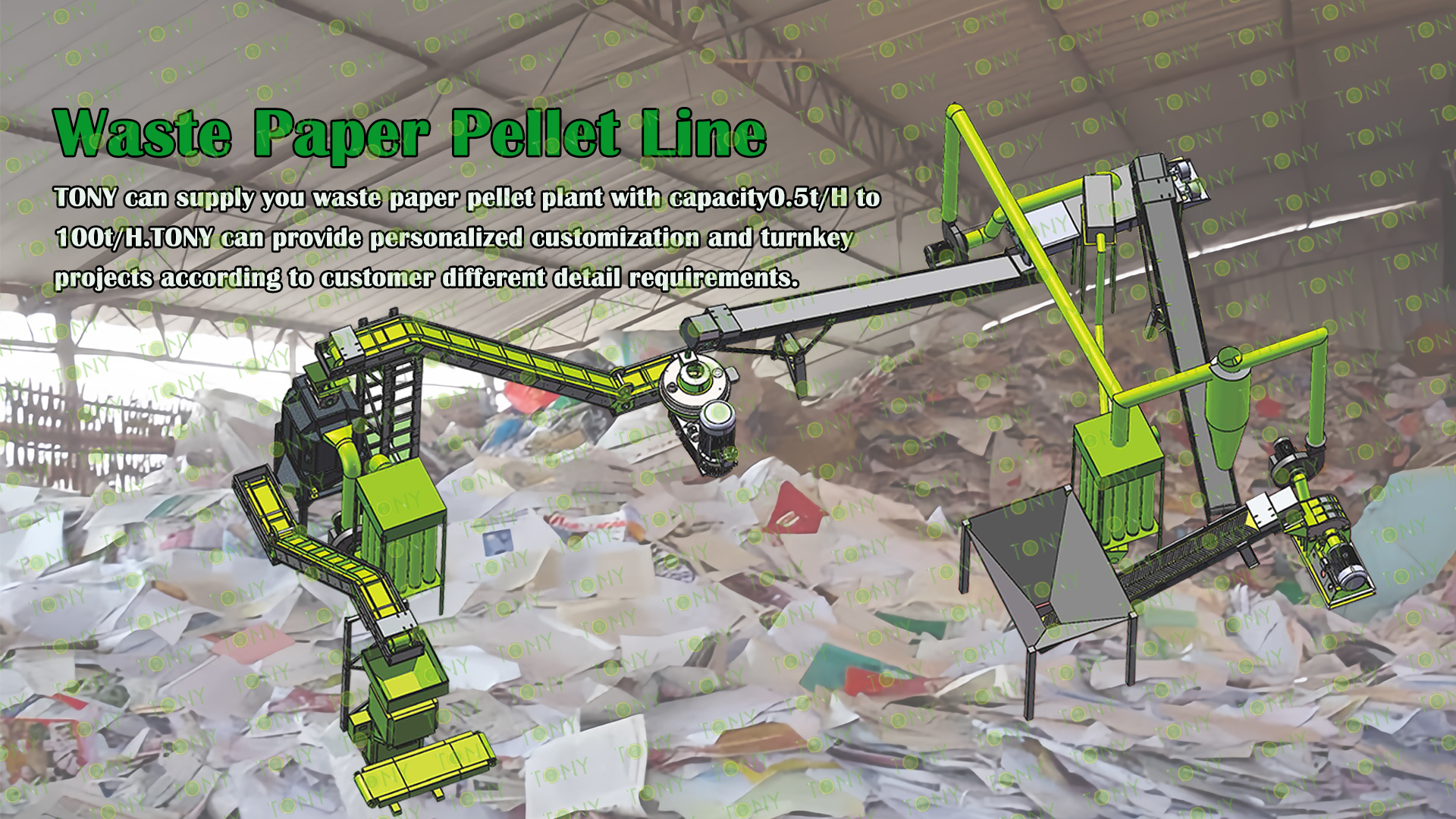


1.Waste Paper Collection And Sorting: Collect waste paper from different channels and sort it according to paper type, quality, etc., remove impurities and non-paper components such as plastics and metals to ensure the purity and quality of the raw materials.
2.Crushing: Use a crusher to crush the sorted waste paper into smaller pieces for subsequent processing. The size of the crushed waste paper is generally between a few millimeters and a few centimeters, depending on the requirements of the production line and the purpose of the final product.
3.Pulping: Mix the crushed waste paper with an appropriate amount of water, add chemical agents such as sodium hydroxide and hydrogen peroxide, and cook or soak it under high temperature and high pressure to fully dissociate the waste paper fibers into a pulp suspension. During the pulping process, chemical agents help remove impurities such as ink and glue in waste paper and improve the whiteness and quality of pulp.
4.Screening And Purification: Use screening equipment such as vibrating screens and centrifugal screens to remove incompletely dissociated fiber bundles, impurity particles and coarse substances in the pulp to further purify the pulp. The screened pulp is more delicate and uniform, which is conducive to subsequent molding processing.
5.Dehydration And Drying: Mechanical extrusion, centrifugal dehydration and other methods are used to remove most of the water in the pulp to make it reach a certain dryness. Then the pulp is further dried to a state with a low moisture content through drying equipment such as dryers, airflow dryers, etc., which is convenient for subsequent molding and storage.
6.Molding: The dried pulp is sent to the pellet molding machine, and the pulp is made into granular products by extrusion, rolling and other methods. The mold shape and size of the molding machine determine the shape and size of the waste paper particles, and the common ones are cylindrical and spherical.
7.Cooling And Packaging: The temperature of the newly formed waste paper particles is relatively high, and they need to be cooled to reduce their temperature to about room temperature to prevent the particles from deteriorating or deforming during storage and transportation. After the cooled waste paper particles are screened and measured, they are packed into packaging bags and sealed for storage or transportation.
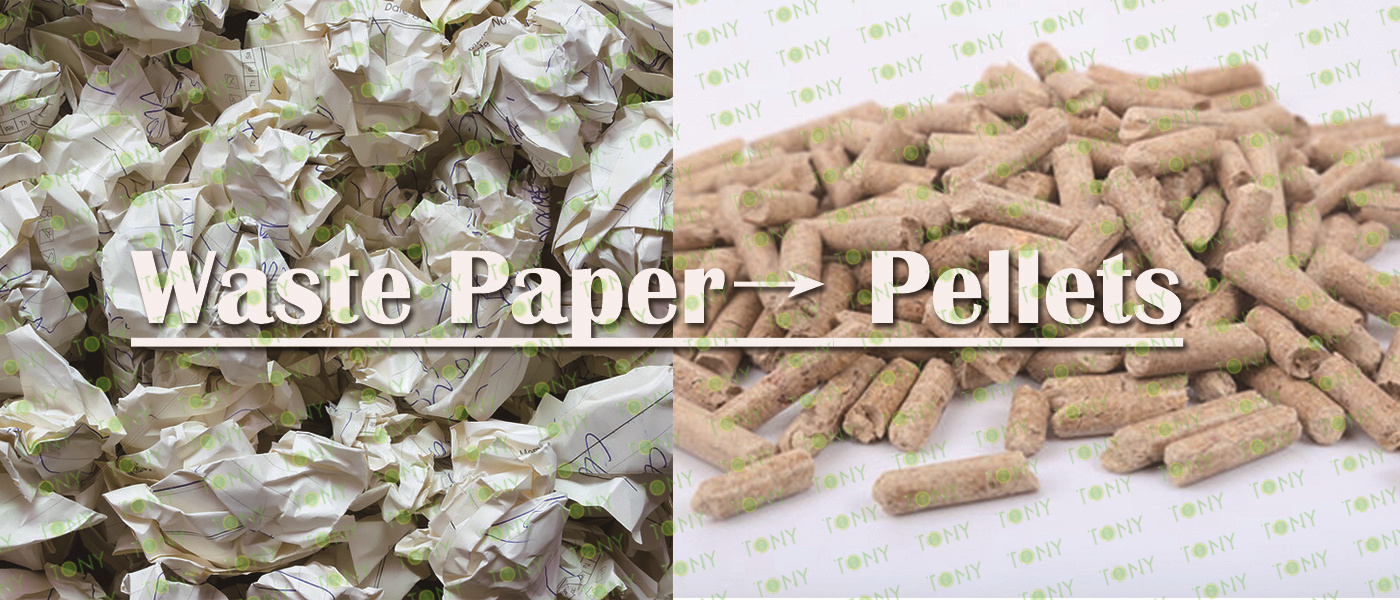

1. Crusher: Common ones include hammer crusher, blade crusher, etc., which are used to crush waste paper into appropriate fragment sizes.
2. Pellet Forming Machine: Mainly ring die pellet machine, flat die pellet machine, etc., which make the dried pulp into granular products by extrusion or rolling.
3. Cooling Equipment: Such as cooling conveyor belts, air coolers, etc., used to reduce the temperature of newly formed waste paper particles.
4. Packaging Equipment: Including metering scales, filling machines, sealing machines, etc., used to measure, package and seal waste paper particles.
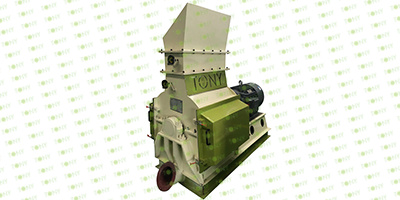 |
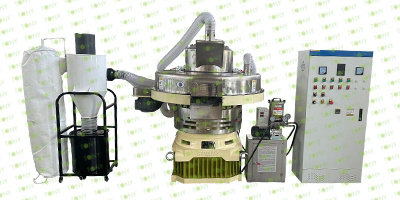 |
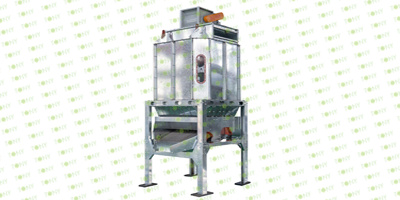 |
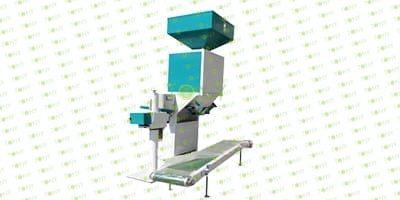 |
| Crusher | Pelleting Machine | Cooling Machine | Packing Machine |

Fuel Field: Waste paper particles can be used as a biomass fuel to replace traditional fossil fuels such as coal and oil. It has a high calorific value and low ash content, produces fewer pollutants when burned, and is more environmentally friendly. In boilers, fireplaces, biomass power plants and other places, waste paper particle fuel can be used for power generation, heating, etc.
Papermaking Industry: Treated waste paper particles can be used as papermaking raw materials and reused in the production of paper and cardboard and other products. Compared with traditional waste paper pulping, waste paper particle pulping has higher production efficiency and better fiber quality, and can produce higher quality paper.
Plastic Products Industry: Waste paper particles can be used as a filling material and added to plastic products, such as plastic films, plastic pipes, plastic sheets, etc. Adding waste paper particles can reduce the cost of plastic products, and at the same time improve the strength, hardness and heat resistance of plastic products.
Building Materials Field: In building materials, waste paper particles can be used to produce insulation materials, sound insulation materials, bricks and other products. For example, the insulation board made by mixing waste paper particles with cement, gypsum, etc. has good thermal insulation performance; the bricks made by mixing waste paper particles with clay are not only light in weight, but also have certain thermal insulation and sound insulation performance.
Gardening And Agriculture: Waste paper particles can be used as covering materials, soil conditioners, etc. in the fields of gardening and agriculture. In gardening, spreading waste paper particles on the soil surface can maintain soil moisture, inhibit weed growth, and regulate soil temperature; in agriculture, adding waste paper particles to the soil can improve soil structure, increase soil fertility, and improve the yield and quality of crops.


1. Stable Market Demand
Paper Industry Demand: With the development of the economy, the demand for paper and paper products continues to grow, such as packaging paper, writing paper, toilet paper, etc. Waste paper particles, as papermaking raw materials, can provide a stable supply of raw materials for paper mills and meet the papermaking industry's large demand for fiber raw materials.
Energy Market Demand: Under the global pursuit of clean energy and renewable energy, waste paper particles, as a biomass fuel, can be used to replace traditional fossil fuels such as coal and oil, and the market demand continues to rise. It can be used in boilers, fireplaces, biomass power plants, etc., to provide heat and electricity for industrial production and residents' lives.
2. Low Cost Investment
Low Raw Material Cost: Waste paper comes from a wide range of sources, including discarded cartons, newspapers, books, etc., with relatively low acquisition costs and sufficient supply. Compared with the use of raw materials such as virgin wood, the purchase price of waste paper is more economical and can effectively reduce production costs.
Flexible Equipment Investment: The equipment investment scale of the waste paper particle production line can be flexibly adjusted according to the production scale and budget. From small-scale home-based workshop equipment to large-scale industrial production lines, investors can choose the appropriate equipment configuration according to their own financial strength and market demand, which reduces the threshold of initial investment.
3. Environmental Protection Is Of Great Significance
Resource Rrecycling: Investing in waste paper pellet production lines helps to achieve resource recycling, convert waste paper into valuable products, reduce the exploitation and consumption of natural resources, conform to the concept of sustainable development, and promote the development of circular economy.
Reduce Pollution Emissions: Compared with traditional fossil fuels, waste paper pellets produce fewer pollutants when burned, such as sulfur dioxide, nitrogen oxides and particulate matter, which are more environmentally friendly, help reduce air pollution and greenhouse gas emissions, and improve environmental quality.
4. Strong Policy Support
Tax Incentives: The government has introduced a series of tax incentives to support the development of resource recycling and environmental protection industries, such as the value-added tax refund policy for renewable resources. Enterprises that invest in waste paper pellet production lines can enjoy corresponding tax reductions and exemptions, reduce the operating costs of enterprises, and improve the economic benefits of enterprises.
Subsidy Support: In order to encourage enterprises to invest in and build environmentally friendly production projects, the government will also provide certain financial subsidies and project support, including equipment purchase subsidies, project construction subsidies, scientific research and innovation subsidies, etc., to provide strong financial support for the development of enterprises.
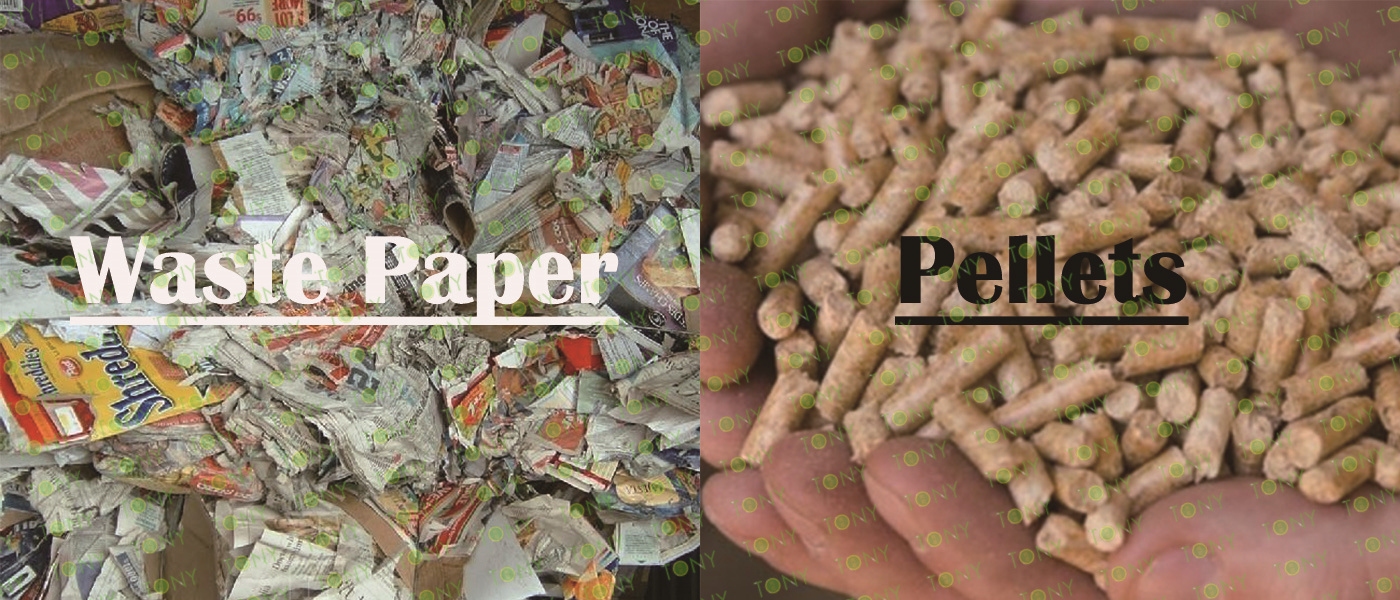

1. Demand In The Papermaking Industry Is Growing Steadily
An Important Supplement To The Supply Of Raw Materials: With the advancement of environmental protection policies and the emphasis on the protection of forest resources, the supply of virgin wood fiber is subject to certain restrictions. As a renewable resource, waste paper will become increasingly important in the papermaking industry. According to data from the China Paper Association, the total pulp consumption in China in 2019 was 96.09 million tons, of which 54.43 million tons was waste paper pulp, accounting for 57% of the total pulp consumption, and it is one of the main sources of pulp.
Quality Improvement And Expansion Of Application Scope: After being processed, waste paper particles can be used to produce a variety of paper products. For example, adding an appropriate amount of waste paper particle pulp to products such as packaging paper and corrugated paper can reduce production costs while ensuring product quality, while improving the flexibility and tensile strength of paper, making it more suitable for packaging and transportation, and further expanding the market space for waste paper particles in the papermaking industry.
2. Great Application Potential In The Energy Field
High-Quality Choice Of Solid Fuel: After waste paper is made into particles, it can be used as a solid fuel, especially for equipment such as biomass boilers. Compared with traditional fossil fuels such as coal, waste paper particles have the advantages of being renewable and less polluting. For example, the annual production of 120,000 tons of combustible (RDF) particles by Zhanjiang Ruiying Environmental Protection Technology Co., Ltd. uses waste paper scraps and other materials to produce combustible particles, providing a new option for the energy market.
Policies Promote Energy Transformation: In the context of global energy transformation, countries are actively promoting the development of renewable energy. As a type of biomass energy, waste paper particles are expected to receive more policy support and market attention, and their application prospects in the energy field are broad.
3. Increased Demand In The Building Materials Industry
Improve Material Performance: In the field of building materials, waste paper particles can be used to manufacture fiberboards and other products, which can increase the thermal insulation and sound absorption properties of the materials. For example, adding waste paper particles to some fiberboards used for interior decoration can effectively reduce the transfer of indoor and outdoor heat and play a certain role in heat preservation; at the same time, it can also absorb and reflect sound, reduce indoor noise, and improve the comfort of the living environment, thereby increasing the demand for waste paper particles in the building materials industry.
Environmental Advantages Are Prominent: As people pay more and more attention to environmentally friendly building materials, waste paper particles, as a green and environmentally friendly raw material, are in line with the trend of sustainable development in the construction industry, and their application in building materials is expected to be further promoted.
4. The Market Competition Pattern Is Gradually Optimized
Large Enterprises Dominate: At present, the waste paper recycling industry presents a competitive pattern of "large enterprises dominate and small and medium-sized enterprises assist". Large enterprises, with their resource advantages, technical strength and market share, occupy a dominant position in the production and sales of waste paper particles, and promote the scale and intensive development of the industry.
Characteristic Development Of Small And Medium-Sized Enterprises: Small and medium-sized enterprises play an important role in the collection, classification and processing of waste paper, and achieve differentiated development through cooperation with large enterprises or focusing on market segments. With the intensification of market competition, enterprises in the industry will continue to improve their own technical level and management capabilities, improve product quality and production efficiency, and promote the gradual optimization of the market competition pattern.


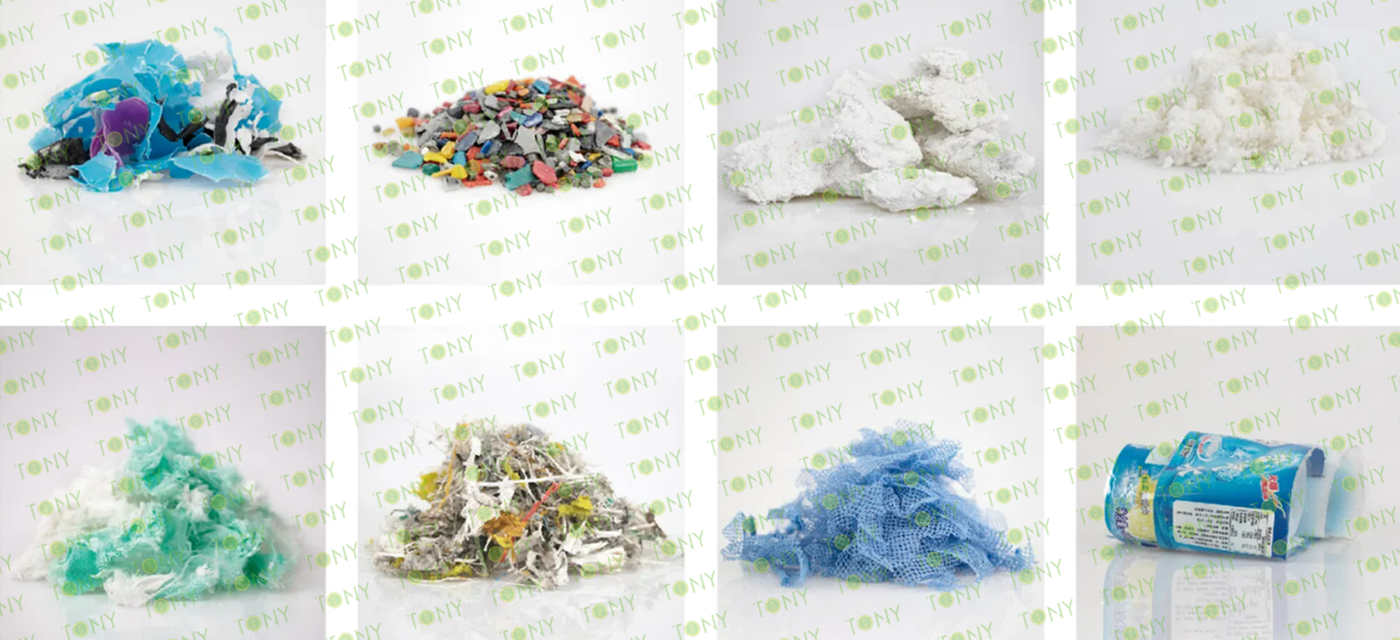





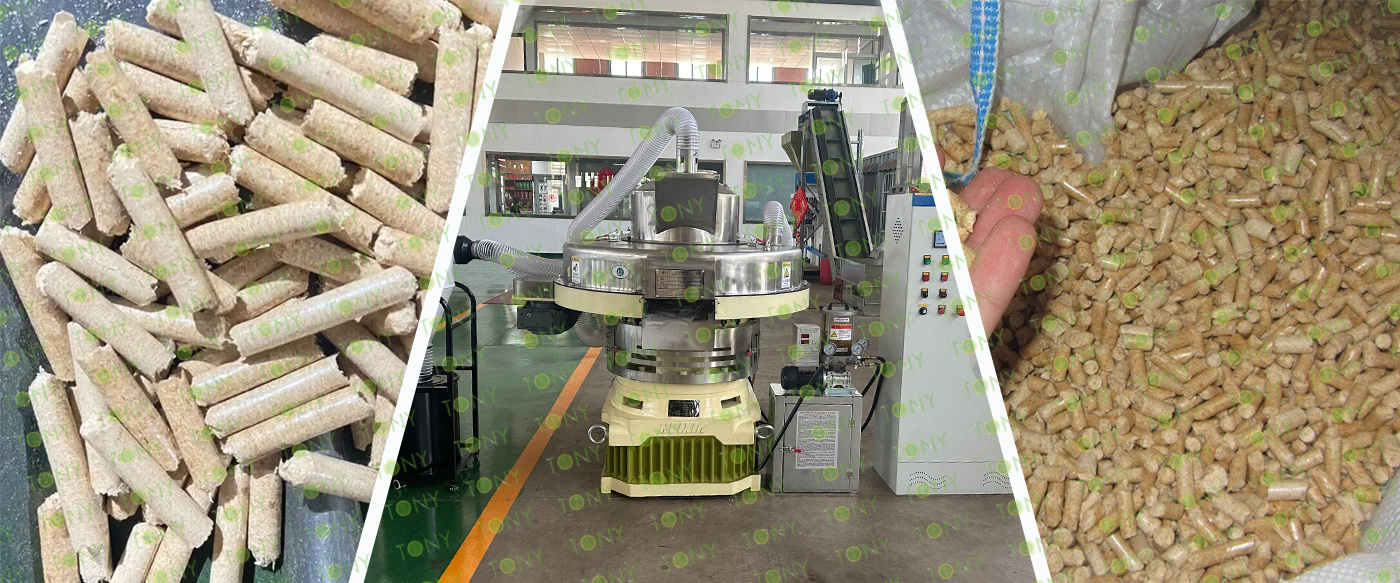


|
1. Fine Crushing Process A. The process is mainly used to crush waste paper into 8-14mm sawdust. B.Capacity: According to customer's demand Main parts: (1).TONY High Effective Hammer Mill. (2).90 Holes Galvanized Dust Collector. (3).Sawdust Conveying Fan. (4).Cyclone With Airlock. (5).Electrical Cabinet. |
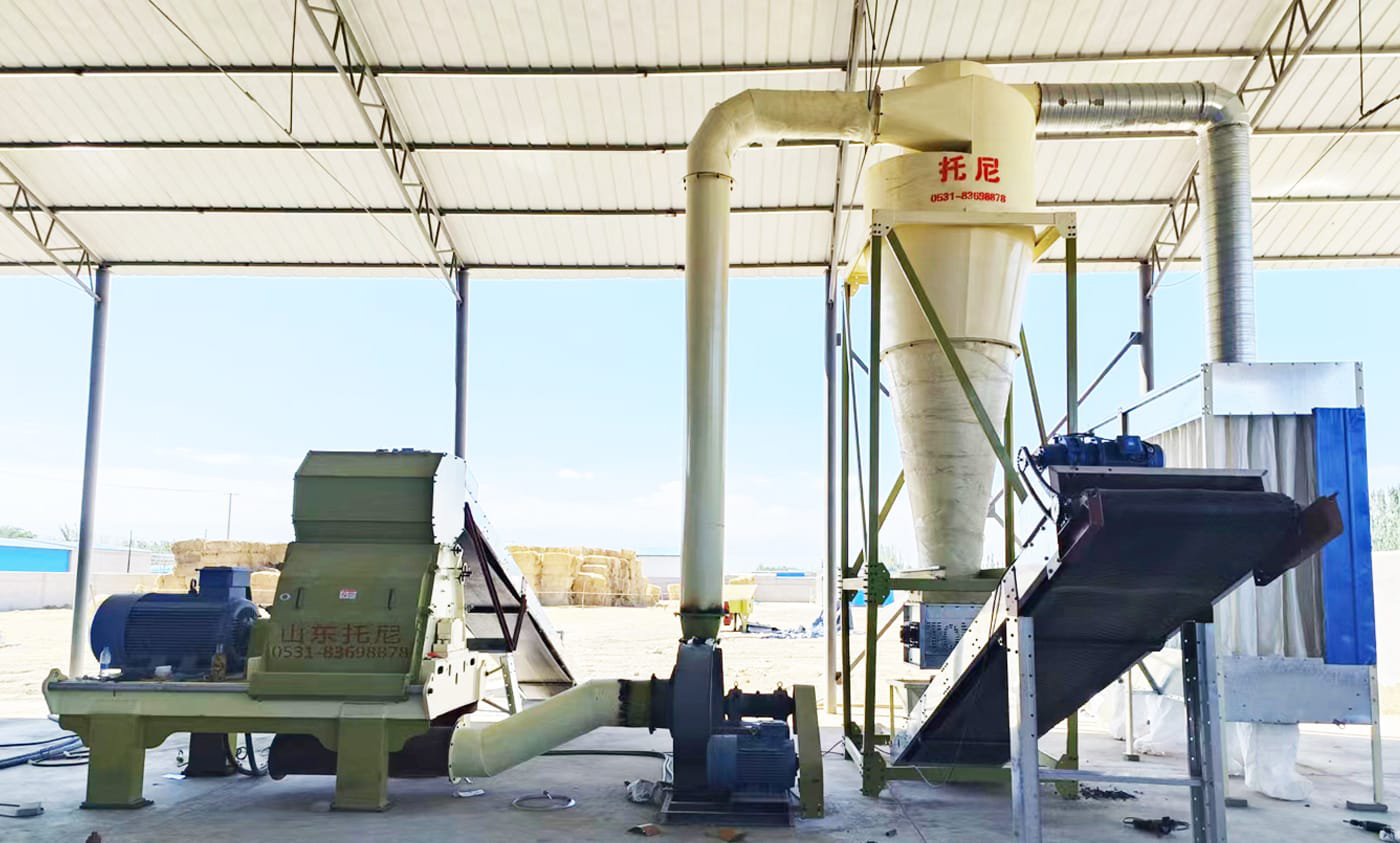

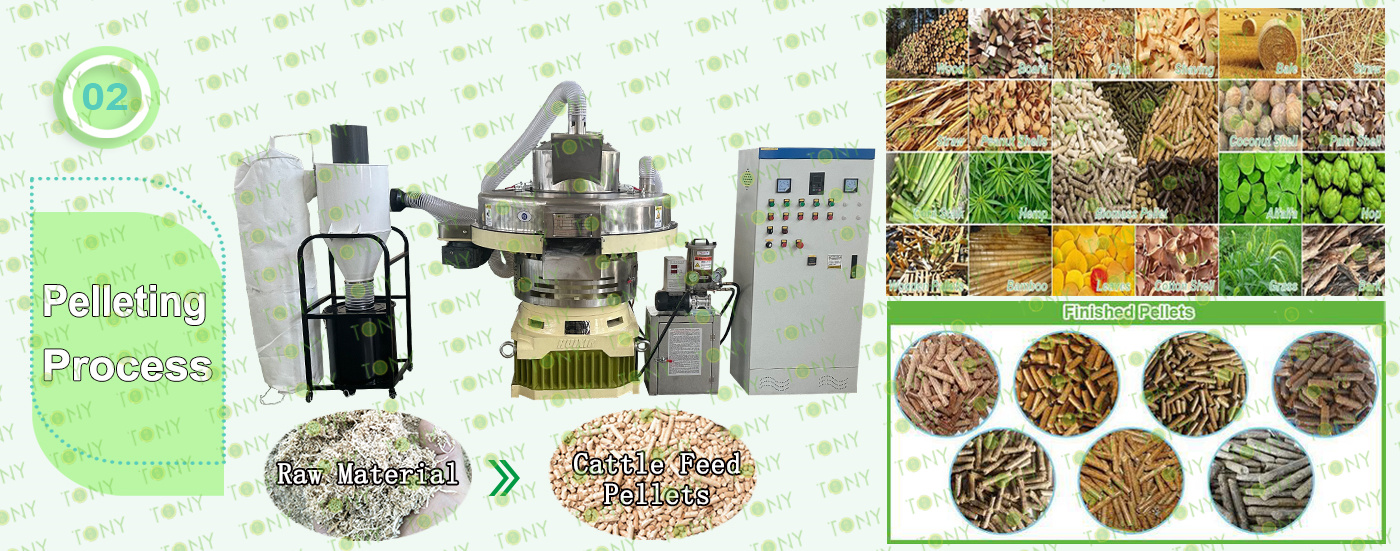
|
2. Pelleting Process: A.This process is mainly used to product pellets with φ6-8mm. Biggest Capacity: According to customer's demand Main Parts: (1).TONY's new Vertical Ring Die Pellet Machine. (2).Cyclone And Bags Dust Collectors. (3).Bearings Automatic Lubrication System. (4).Electrical Cabinets. You can choose TONY new type SS304 pellet machine or old type MS pellet machine. |



3.Cooling Process
A.This process is mainly used to cool pellets from 80-90℃ to 20-30℃.
Main Parts:
(1).TONY's new Galvanized Cooler Separator With Vibrating Screen.
(2).Cycone And Bags Dust Collectors.
(3).Fan Blower.
(4).Connect Pipes.


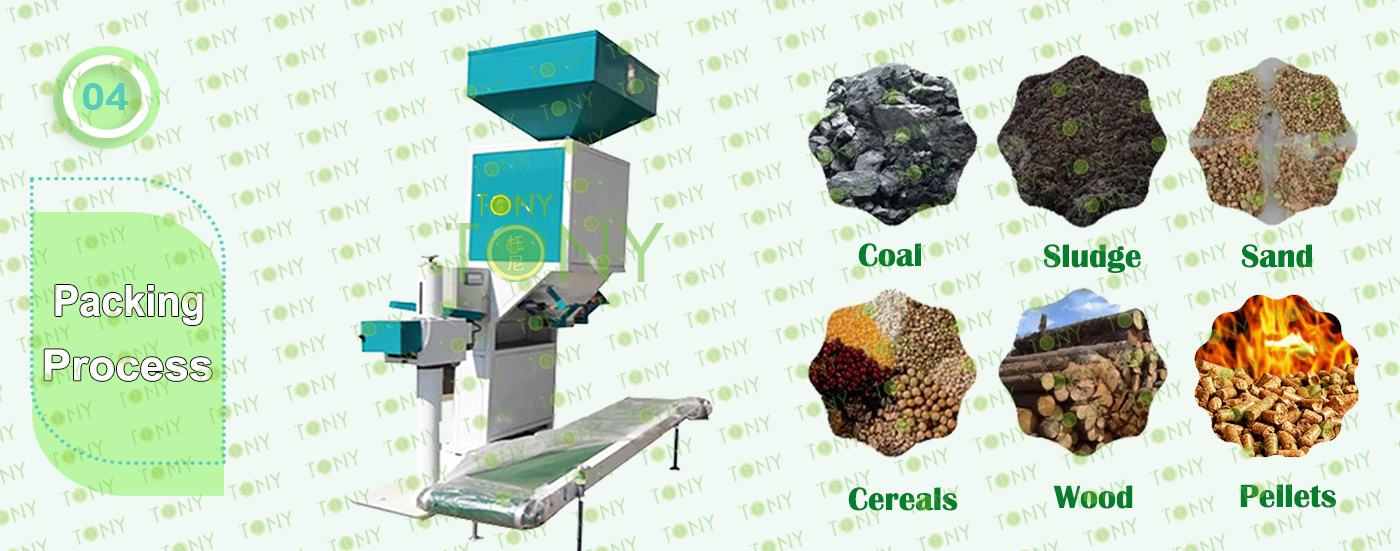
4. Packing Process:
A.This process is mainly used to pack pellets to 1Ton/Bags.
B.The customer chose 1 set of TONY Ton Packing Machine.
Main Parts:
(1).TONY's new Ton Packing Machine.
(2).Packing Machine, Sew Machine, buyer can also chooses Hot Seal Machine for chosen, to confirm with TONY for the price difference.
(3).Bags Transportation Conveyors.
(4).Feeding Inlet Silo With 2㎥.
(5).Electrical Cabinets.
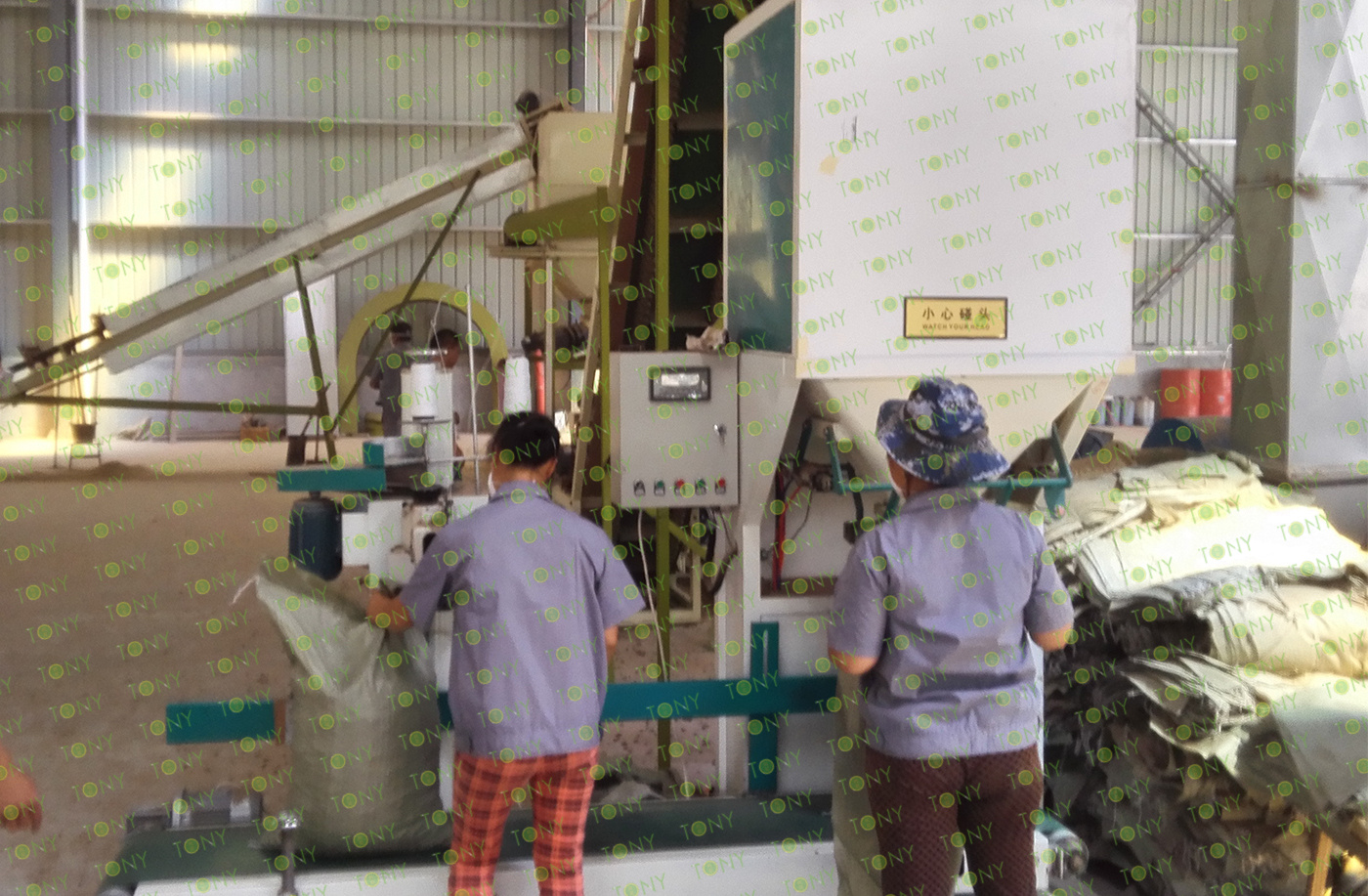

TONY can provide different kinds of complete pellet production line. The whole pellet production line suitable for press the different kind of Crop Stalk log,Crop Stalkchips,Crop Stalk , Crop Stalk scrap, Crop Stalk shaving and other biomass materials suchas rice husk, corn cob, straw, palm fiber and other agriculture into goodquality biomass fuel pellets.


The waste paper biomass pellet production line converts renewable resources such as waste paper grass into pellet fuel, realizes the sustainable use of energy, and promotes the development of low-carbon and environmentally friendly energy. The entire process of biomass pellet production includes raw material resource preparation, processing and preparation, and sales. The biomass pellet production line has been popular in the market for many years, with mature technology and considerable profits. It is a good project for investment and entrepreneurship.
1. Processing And Preparation:
The equipment of the biomass pellet production line mainly includes crushing, granulation, cooling, packaging and other equipment. The core equipment is the pellet machine. The entire production line can be selected according to the specific situation of waste paper grass, the output size and specific needs. TONY has nearly 20 years of experience in pellet production lines, reliable equipment, good reputation, and reasonable price. You can come to the factory for a visit.
2. Biomass Pellet Sales:
With the increase in global demand for renewable energy, biomass fuel, as a green, low-carbon renewable energy, has a growing market demand. Biomass fuel has a wide range of applications. In the power sector, biomass fuel can be used to generate electricity, replacing traditional fossil fuels and reducing carbon emissions. In the thermal sector, biomass fuel can be used for heating, providing clean energy for residents and businesses. In the transportation sector, biomass fuel can be used to replace the power industry's market demand for traditional biomass fuels.
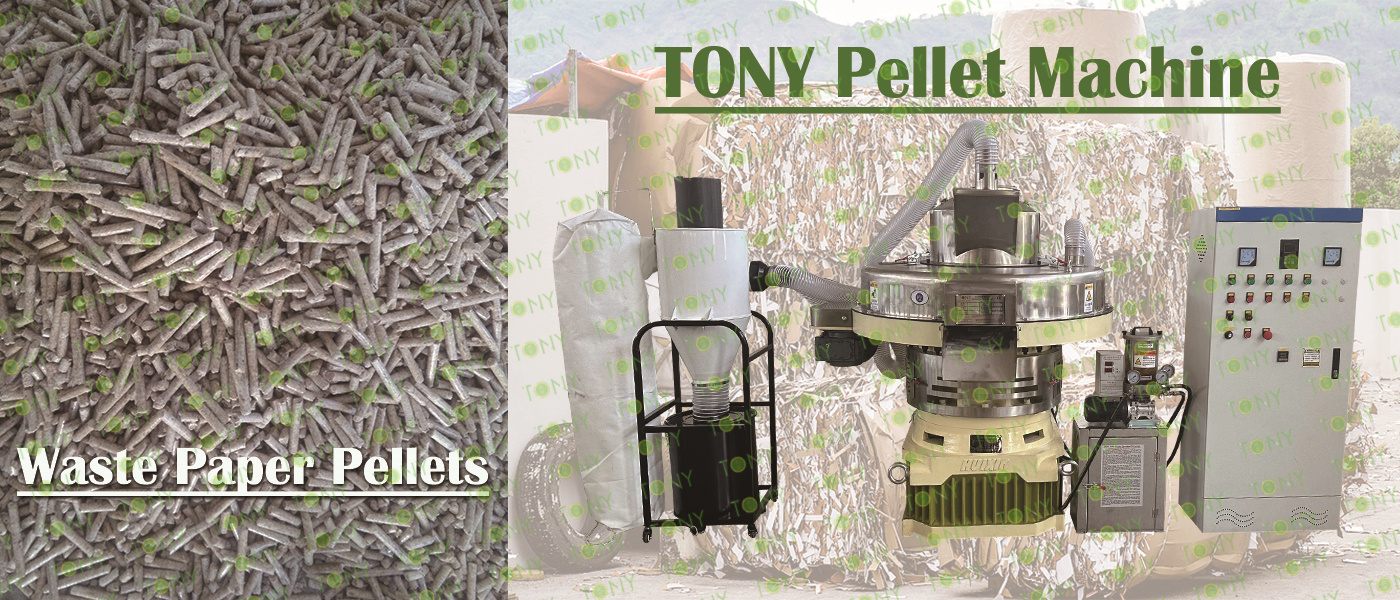
Using waste paper to make particles has many advantages, including the following:
1. Significant Environmental Benefits
Reduce Landfill Waste: Waste paper is a common solid waste that takes up a lot of landfill space if discarded directly. After being made into granules, it can effectively reduce the amount of landfill and relieve the pressure on landfill.
Reduce Pollution Emissions: Compared with traditional fossil fuels, waste paper pellets produce less pollutants during production and use. For example, when waste paper particles are burned, the emissions of harmful gases such as sulfur dioxide and nitrogen oxides are relatively low, which helps improve air quality and reduce environmental pollution.
2. Efficient Use Of Resources
Saving Raw Materials: Waste paper itself is a renewable resource. Converting it into particles through the granulation process can realize resource recycling, reduce dependence on raw materials such as native wood, and protect forest resources.
Energy Recycling: Waste paper particles have a certain calorific value and can be used as fuel, thereby replacing some traditional energy sources, such as coal, oil, etc., realizing energy recycling, improving resource utilization efficiency, and helping to alleviate the problem of energy shortage.
3. Low Production Cost
Low Raw Material Cost: Waste paper comes from a wide range of sources, including office waste paper, newspapers, magazines, packaging paper, etc., and the acquisition cost is relatively low. In some cases, waste paper is even available for free, significantly reducing raw material costs for pellet production.
Simple Production Process: The production process of waste paper granulation is relatively mature and simple. It does not require complex equipment and technology. The energy consumption and labor costs in the production process are also relatively low, which helps to improve production efficiency and reduce production costs.
4. Excellent Product Performance
Good Combustion Performance: After the waste paper particles are compressed, they have a larger density and higher calorific value. When burning, the flame is stable and the combustion efficiency is high. It can provide a stable supply of heat energy and is suitable for a variety of combustion equipment, such as boilers, fireplaces, etc.
Convenient Storage And Transportation: Waste paper particles are regular in shape and small in size, making them easy to store and transport. Compared with loose waste paper, granular waste paper takes up less space, is not susceptible to moisture and deterioration, and is not easily scattered during transportation, reducing transportation costs and risks.

1. Raw Material Cost
Waste Paper Purchase Price: The purchase price of waste paper varies by region, type of waste paper and market conditions. Generally speaking, the purchase price of ordinary waste paper boxes is around 0.5 yuan/jin - 0.8 yuan/jin, that is, 1000 yuan/ton - 1600 yuan/ton. If it is good quality office waste paper, the price may be slightly higher.
Raw Material Consumption: It takes about 1.2 tons to 1.3 tons of waste paper to produce 1 ton of waste paper particles. This is because there will be a certain loss during the processing process, including water evaporation, impurity removal, etc. Calculated at an average purchase price of 1300 yuan/ton for ordinary waste paper boxes, the cost of 1.25 tons of waste paper is about 1625 yuan.
2. Equipment And Maintenance Costs
Equipment Investment: A complete set of waste paper pellet production equipment, including crusher, dryer, granulator, screening machine, etc., costs between 50,000 yuan and 200,000 yuan, depending on the production capacity and degree of automation of the equipment. If the equipment investment is 100,000 yuan and the service life is 5 years, the annual equipment depreciation cost is about 20,000 yuan, and the equipment depreciation cost per ton of waste paper pellets is about 6.7 yuan.
3. Equipment Maintenance
The maintenance cost of the equipment is about 5,000 yuan to 10,000 yuan per year, including the cost of replacing parts, lubrication, and maintenance of the equipment. The maintenance cost per ton of waste paper pellets is about 1.7 yuan to 3.3 yuan.
Energy consumption cost.
4. Power Consumption
During the production process, crushers, dryers, granulators and other equipment consume a lot of electricity. Generally speaking, the electricity consumption for producing 1 ton of waste paper pellets is about 150-250 degrees. Calculated at 0.5 yuan per kilowatt-hour, the electricity cost is about 75 yuan to 125 yuan.
Fuel consumption: If fuel, such as coal, biomass pellets, etc., is used in the drying process, certain costs will also be incurred. Taking coal as an example, it takes about 100 kg to 150 kg of coal to dry 1 ton of waste paper fragments. The coal price is calculated at 800 yuan/ton, and the fuel cost is about 80 yuan to 120 yuan. If biomass pellets are used as fuel, the cost may be slightly higher, but it is more environmentally friendly.
5. Labor Cost
Production Staff Wages: A waste paper pellet production line usually requires 2-3 operators, with a monthly salary of about 4,000 yuan to 5,000 yuan per person, and a monthly labor cost of about 8,000 yuan to 15,000 yuan. Based on the production of 200 tons of waste paper pellets per month, the labor cost per ton of waste paper pellets is about 40 yuan to 75 yuan.
Management Staff Wages: It is also necessary to consider the wages and benefits of management staff. This part of the cost is relatively difficult to accurately allocate, but it is roughly estimated that the management cost per ton of waste paper pellets is about 10 yuan to 20 yuan.
6. Site Rental Cost
The rental cost of the production site varies from region to region, and the annual rent per square meter is generally around 50 yuan to 200 yuan. Assuming the production site area is 500 square meters and the annual rent is 50,000 yuan, the site rental cost per ton of waste paper pellets is about 8.3 yuan.
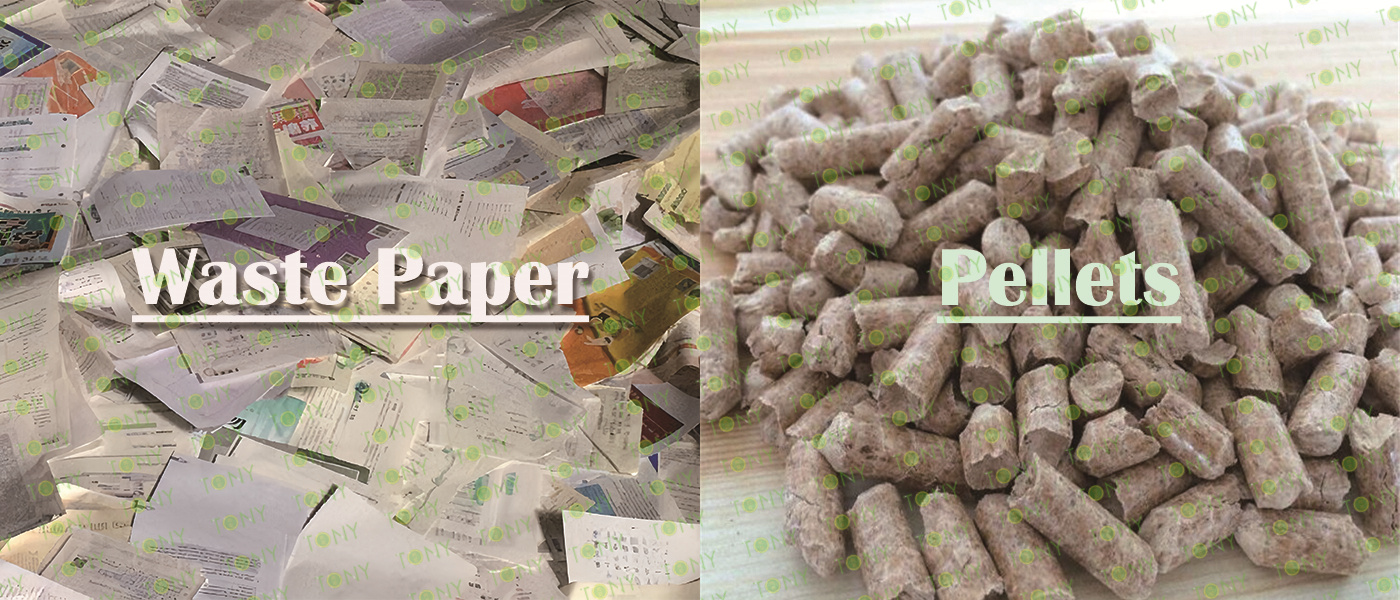

Fuel Field: If waste paper pellets are sold as fuel, the price is generally around 600-1000 yuan/ton. For example, some small factories or boiler rooms do not have particularly high requirements for the calorific value of fuel, and will choose relatively low-priced waste paper pellets as supplementary fuel. At this time, the selling price may be around 600 yuan/ton; while for some places with high requirements for fuel quality and calorific value, such as biomass power plants, the selling price of waste paper pellets may reach 1000 yuan/ton.
Papermaking Field: When waste paper pellets are used for papermaking, their price usually has a certain price difference with raw materials such as virgin wood pulp, generally around 1200-1500 yuan/ton. This is because after the waste paper pellets are processed, although they can be reused for paper making, they may be slightly inferior to virgin wood pulp in terms of fiber strength, so the price is relatively low.
Other Fields: In the fields of packaging, agriculture, building materials, etc., the selling prices of waste paper pellets are also different. In the packaging field, packaging materials with added waste paper particles have increased their added value due to their environmental performance and certain cost advantages, and the price may be between 1,000 yuan and 1,300 yuan per ton; in the agricultural field, as a soil conditioner, its selling price may be between 800 yuan and 1,000 yuan per ton; in the field of building materials, due to the high requirements for the performance and quality of waste paper particles, and its unique role in improving the performance of building materials, the price may be around 1,200 yuan to 1,500 yuan per ton.
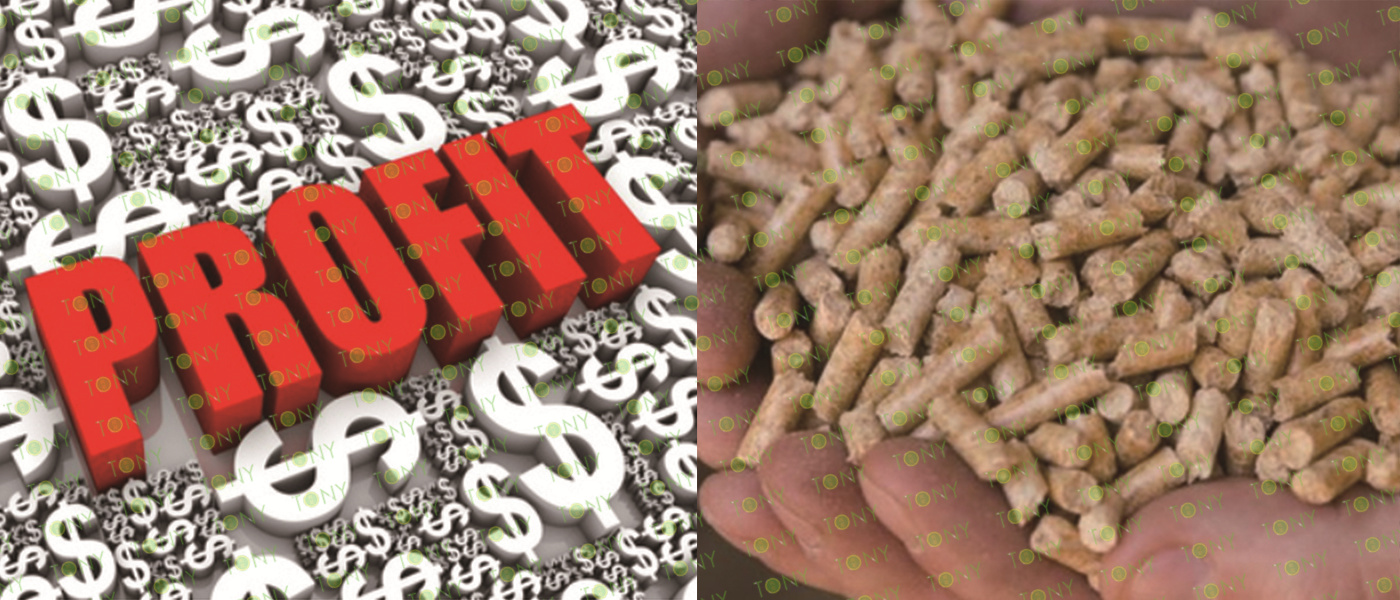



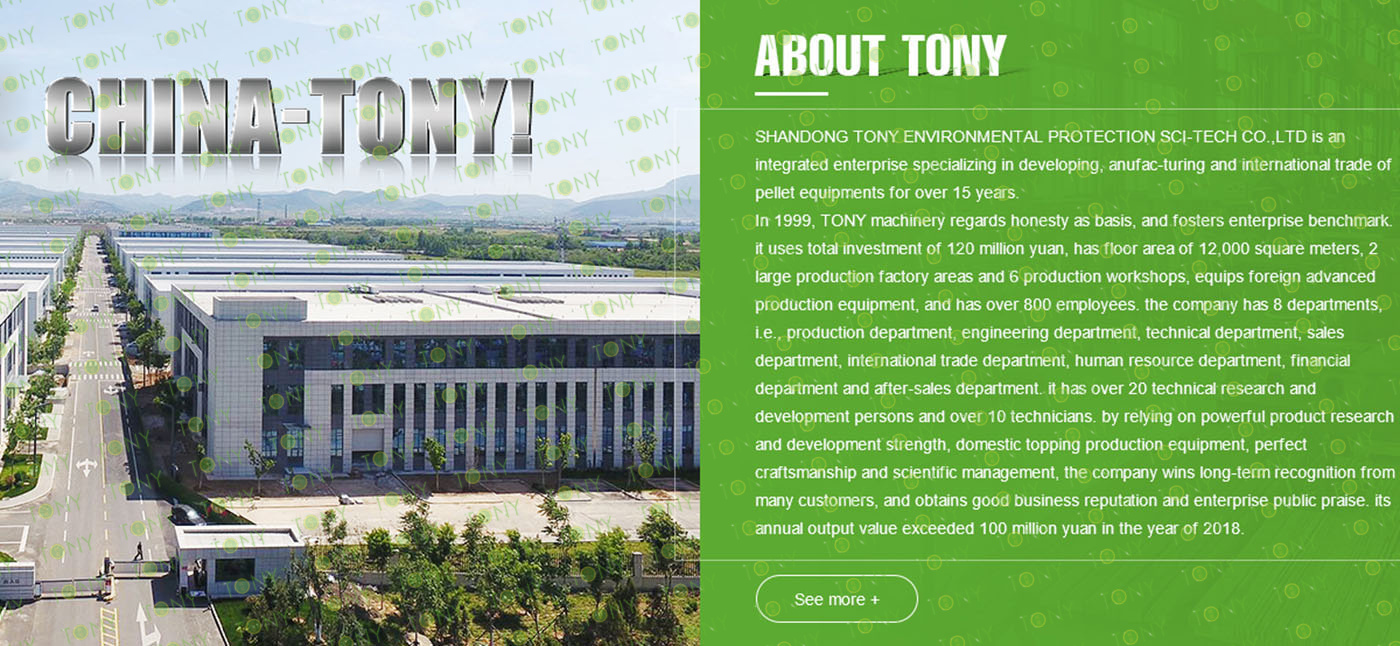
2025 Tony Machinery - All Rights Reserved. Map